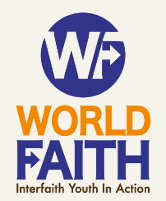By Frank Fredericks
AN ALTERNATIVE TO MORE MONEY
It’s pay day. The bills are due. The fundraiser flopped, the ask unanswered. Donations are diminishing and expected grants taken for granted. Program associates are waiting for their next quarterly budget, and all you can imagine doing is sliding underneath your desk and hibernating through this financial winter. It’s pay day, but today you can’t pay.

Too often when nonprofits, especially interfaith initiatives, face financial troubles, the solution is more funding. Need to expand a program? More funding. Not covering your cashflow? More funding? Want to expand benefits to attract better employees? More funding. Regardless the woe, more money seems to be the reprise. While increasing funding can’t hurt, I’ve seen too often an unwillingness to cut spending and improve efficiency as an answer. In a landscape of increased uncertainty, we must be more nimble than ever before. We must be lean, mean, and a well-measured machine.
Not only have I experienced this as the founder of World Faith, a global interfaith organization working in 15 countries, but also in my work as a communications consultant. At Mean Communications, many of our clients are nonprofits who are facing a resource crunch and need new ideas to navigate uncharted waters. Nonprofits, like many institutions and organizations in the 21st century, are facing greater uncertainty.

That’s why I lean fairly heavily on the Lean Startup model. Based on a book called The Lean Startup by Eric Ries, it’s a methodology for building efficient organizations by minimizing risk, including the time and money invested into building new ideas. The proposed process of doing this includes a few key components. First, rather than spending a year and thousands of dollars to develop a new program or project, it promotes prototyping new concepts on the smallest scale possible, known as a MVP (minimally viable product). By learning what works and doesn’t work early on, you can improve the prototype before you push out a large version. This saves tons of money spent developing large-scale solutions that may flop in the end.
Second, the strategy of continuous deployment is crucial. Rather than spacing out large organization changes, you constantly adapt and evolve, improving how you work with each new iteration. Not only does this make your organization more nimble to deal with changing contexts, but it helps avoid going over budget and hitting cashflow problems.
Third, success depends on real, actionable metrics. Not the metrics you show that show the best angle possible, but the most damning numbers that force you to grow and learn. Remember, you can’t improve what you haven’t measured. On a higher level of analysis, the lean Startup model should force you to recognize when you’re progressing on the right track, and when you need to pivot as an organization. Now, this is a gross oversimplification of the philosophy, but we’ve already bitten off enough to chew on for the time being.
While the methodology can seem a bit clinical, too often nonprofits manage their finances and their programming at opposite ends of the spectrum; working hard with little to prove that their work is making a significant, measurable impact. Sometimes it’s rooted in a strategy that is more philosophical than scientific. However, there’s a great opportunity to dabble with these ideas.
Have an idea of a new process for an existing program to maximize impact and lower costs, but recognize it may cost thousands to implement? Prototype it in one small context, measure its impact against the control group, and evaluate. If your communication needs aren’t robust yet with a staff of two, move someone over and pilot a week of only one communications employee. You might be surprised how much you can learn, and how quickly the organization can adapt, when you test, measure, and incorporate your findings.
This approach and methodology will not work for every context nor win over the hearts of everyone. In fact, many staff, funders, and constituents may be outright against it. A balance has to be struck between measured impact and a sustainable long-term vision with all stakeholders. Nonetheless, every organization can apply these methods to fundraising. It could be as simple as A/B testing a donor email; send half your donors an email with image A, the other half B. Which worked better? Why did that happen? You can improve your fundraising efforts significantly if you find one small thing to test and pilot each time you interact. Test the copy, method (email, social media, traditional mail), time of day, day of week, frequency. Test it all and you’ll increase your fundraising capacity significantly, even if you don’t widen the donor pool.
You can even take the lean concept beyond the specific methodology. It can be as simple as looking for simple ways to cut costs rather than wholly seeking additional funds. Perhap you can get a better deal on your CRM solution, your phones could go all digital (thus cheaper), or even reorganize the workspace to put off moving into a larger office. The point is, raising more money doesn’t have to be the answer to every financial question. Not only will you be more effective, but your donors and stakeholders will have more faith in your leadership.
Funding is the lifeblood of your organization. Whether through grants, donations, or social enterprises, every organization needs money to survive. Just think outside the box, and see what else you can do to maximize your impact. And avoid spending your every waking moment tapping your funders for more love. It’s time the interfaith movement start running like well-ran businesses. Efficient, lean, and measured. The entire world will be better for it.

